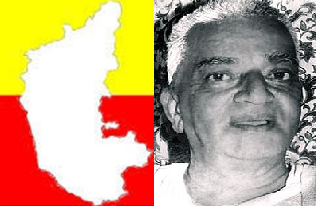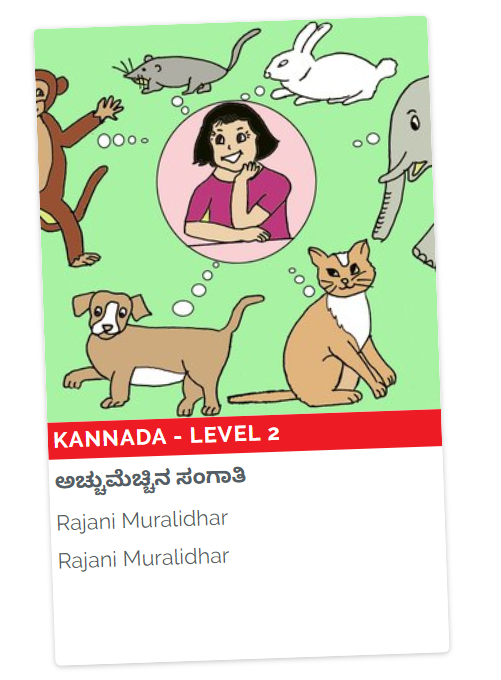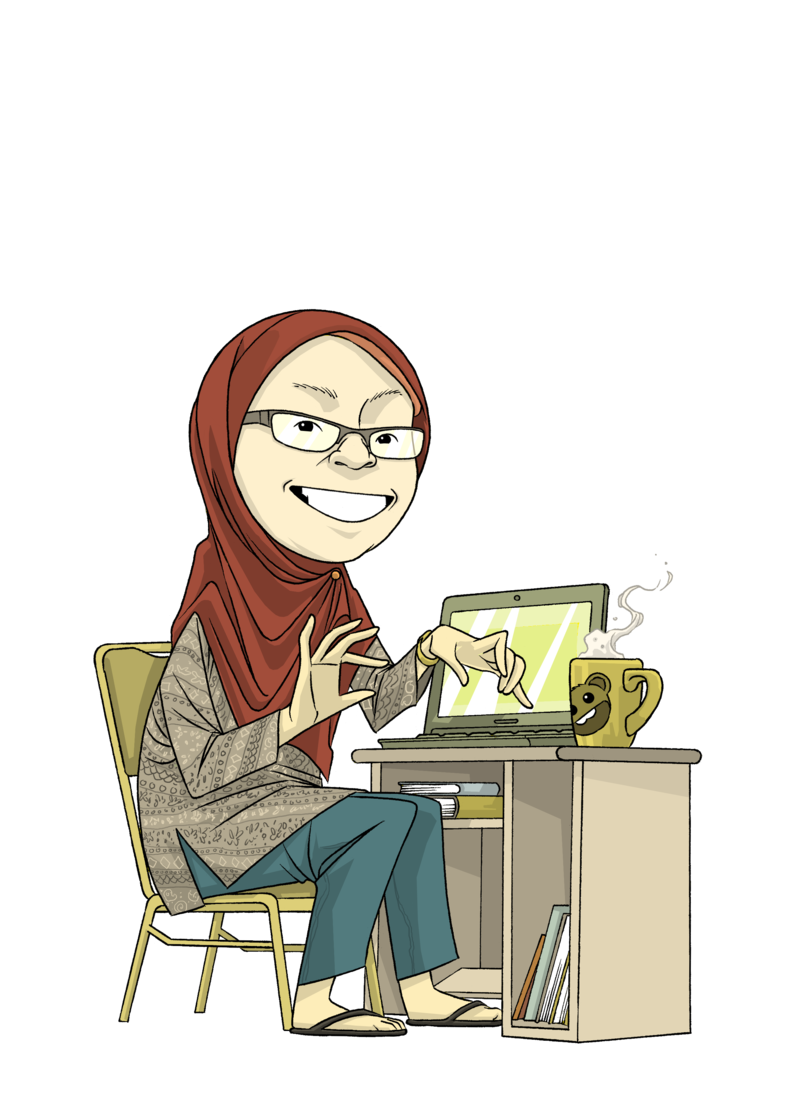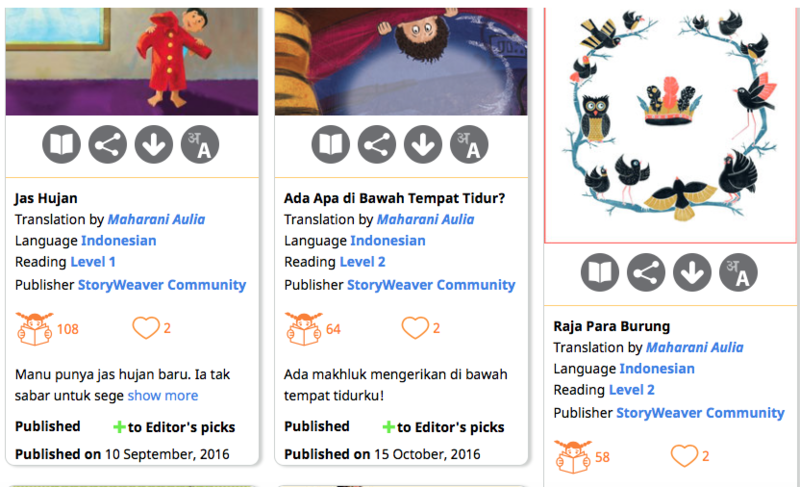Pratham Books at the Global Book Fund, CIES 2016
Posted by Remya Padmadas on March 31, 2016Suzanne Singh, Chairperson, Pratham Books was invited to be part of a discussion on the Global Book Fund at CIES 2016 in Vancouver.
The Comparative and International Education Society (CIES), Inc., was founded in 1956 to foster cross-cultural understanding, scholarship, academic achievement and societal development through the international study of educational ideas, systems, and practices.
The Global Book Fund is a groundbreaking initiative with a wide range of partners that is building on experience from health sector commodity reform to transform the development, procurement and distribution of books for the education sector. It is expected that Book Fund activities will increase book quality and availability while decreasing costs. The initial focus will be on books for reading instruction and practice in underserved languages.
The three Book Fund panels at CIES this year updated CIES participants on progress and engaged them in contributing to improving and increasing content, transforming approaches to financing and procurement and modernizing approaches to supply chain management to ensure Books For Every Child.
The lack of high quality textbooks, reading books and library materials in languages children understand in many countries has produced a learning crisis: “Of the world’s 650 million primary school age children, at least 250 million are not learning the basics in reading and mathematics . . . 130 million of these children are in primary school but have not achieved the minimum benchmarks for learning (UNESCO EFA GMR, 2014).”
Suzanne’s panel focused on providing a critical analysis of new approaches to content development, content access and supply. She presented StoryWeaver as a tool to address the issue. Her co panelists were:
Ana Robledo, RTI who began the session by providing an overview of the large-scale Learning Materials Survey that was just completed for Africa. This survey reviewed more than 6000 titles in 11 African countries, covering many languages of instruction. She described the results of the survey and framed the issues of title availability and access. Ed Gaible, Natoma Group, presented recommendations from his recently conducted design study for the Global Reading Repository and solicited feedback from the audience on maximizing the functionality and use of the GRR for governments, organizations and individuals to upload, download and print titles within and across contexts.
Michelle Malecki presented the two prototypes of “track&trace” technology that USAID is piloting to improve book distribution and management.
Paul Frank, SIL LEAD and Suzanne, presented and discussed the open source software packages that their respective organizations had developed and engaged the audience in a conversation about encouraging access by local authors and large scale uptake.
Suzanne spoke of how Pratham Books was using Open Source as a means to address the scarcity in multilingual reading resources for children through the StoryWeaver platform.
Pratham Books mission is a book in every child's hand and this has a two part objective, one is to create more multilingual reading resources so there are more available for children to read and the second is to provide access to these books, where children need them the most. She spoke of the challenge in creating a scalable publishing model for a massively multi-lingual and multi-cultural market. Pratham Books' solution was to create an open source platform, StoryWeaver, which provides free access to thousands of books in multiple languages. As a publisher that has been creating children’s books, primarily in print, for over a decade, Pratham Books’ has a vast catalogue of high quality books in 18 Indian languages. We have openly licensed our storybooks on StoryWeaver for users to read, download or print. Apart from this, we have also embedded some tools for content creation - to enable people to repurpose the content into more languages and versions. The goal is to bring together content users and content creators and create a participatory culture that will catalyse the creation of more content.
You can see Suzanne Singh's entire presentation here.
Be the first to comment.Celebrating Kannada Rajyotsava through classic poems
Posted by Asawari Ghatage on November 01, 2019A former software professional, Rajani Muralidhar developed a keen interest in children's literature while reading to her own children over the last few years. The lack of contemporary original content in Kannada for children piqued her interest towards writing for her own children in Kannada.
ಸಾಫ್ಟ್ ವೇರ್ ವೃತ್ತಿಯಲ್ಲಿದ್ದ ರಜನಿ, ಕೆಲವು ವರ್ಷಗಳಿಂದ ಅವರ ಮಕ್ಕಳಿಗೆ ಕಥೆಗಳನ್ನು ಓದುತ್ತಾ, ಮಕ್ಕಳ ಸಾಹಿತ್ಯದಲ್ಲಿ ಆಸಕ್ತರಾದರು. ಸಮಕಾಲೀನ ಮಕ್ಕಳ ಸಾಹಿತ್ಯದಲ್ಲಿ ಮೂಲತಃ ಕನ್ನಡ ಕೃತಿಗಳ ಲಭ್ಯತೆ ಕಡಿಮೆ ಇದ್ದ ಕಾರಣಕ್ಕೆ, ರಜನಿ ತನ್ನ ಮಕ್ಕಳಿಗಾಗಿ ಕನ್ನಡದಲ್ಲಿ ಬರೆಯಲಾರಂಭಿಸಿದರು.
In this bilingual blog post, Rajani writes about Dr. G.P. Rajarathnam, author, lyricist and poet from Karnataka and how his work inspired her to write poetry in Kannada.
Kannada Rajyotsava, commonly known as Karnataka Formation Day, is a state public holiday observed annually on November 1st. On this day in 1956, the Kannada-speaking areas of South Western India combined to establish the state of Karnataka. It is a day to celebrate the rich and varied culture and heritage of this state.
Kannada Rajyotsava Celebration
In the whole state of Karnataka, Rajyotsava Day is observed with great jubilation and vigour. On this day, the red and yellow Kannada flags are raised at several key points around the state, and the Kannada national hymn ("Jaya Bharatha Jananiya Tanujate") is shouted, giving the entire state a joyful appearance. While youngsters in many places participate in processions in their automobiles, the flag is flown at political party headquarters and in some communities. The Rajyotsava is observed by Hindus, Muslims, and Christians alike regardless of religion.
There is no better day than this to remember Dr. G.P. Rajarathnam, author, lyricist, and poet from Karnataka, well-known for composing children’s poems.

Dr. G.P. Rajarathnam
The following was remarked about Rajarathnam by an Indian author, scholar, and translator Ambale Ramakrishna Krishnashastry – “With his forceful exposition, brilliant personality, a smiling face, and good conduct, the student following he has attained is something to be proud of. A teacher who earns the respect of his students is a puṇyavanta and his students are blessed. A teacher like Rajarathnam who could nurture and bring out the latent talent present in the students is indeed rare. The writings were written by his students which he has published under the title ‘ಕಾಲೇಜು ಬರವಣಿಗೆ’ (College Writings) bear testimony to this. Due to his untiring efforts, so many starlings became visible and shone even in the daylight.”
Kannada Rajyotsava Poems For Children
The beautifully written and easy-to-comprehend short Kannada poems by Dr. Rajarathnam are widely loved by children and serve as ideal Kannada Rajyotsava poems.
Dr. Nissar Ahmed, also an eminent author and poet in the Kannada language, once quoted, “Dr. Rajarathnam understood the minds of children and their needs. Some of his works have remained a challenge for translators even today". Such is the quality of Dr. G.P. Rajarathnam’s poetry.
A form of self-dissolution is necessary in order to comprehend and respond to the impressionable brains of youngsters. It requires a review of who we are from an objective, external viewpoint. Rajarathnam was partly destined to have this. Every child’s initiation to language in school begins with nursery rhymes. Similarly, initiation to Kannada in school always begins with one of Dr. Rajarathnam’s poems.
It is no unknown that the growth and development of a state are in the hands of its children who grow up to be future citizens. Therefore, it is crucial to inculcate in the minds of children, a feeling of pride and fondness for their cultural and lingual roots. Kannada Rajyotsava poems and Kannada Rajyotsava song lyrics by Dr. Rajarathnam are thus, the best options to start with!
Dr. Rajarathnam: A Gem of Kannada Poetry
Dr. Rajarathnam started writing poetry for children several decades ago by accident. The story goes that his father worked as a Kannada teacher in a school and was unwell for a few days. Dr. Rajarathnam had to work in his place as a substitute teacher for 2nd-grade children. He was appalled by the poems taught to small children in school. The same evening, he sat thinking after a walk near a lake at the foothills of Chamundi hills in Mysore and wrote his first story in the form of a poem ‘Bannada tagadina tutturi’. He introduced this poem to his students in school and it was an instant hit. Thrilled with its popularity, he also taught this poem to the children in his neighbourhood. He continued writing more short Kannada poems for the children. A publisher in his neighbourhood noticed his work and asked him to write a collection of children’s poems, which went on to be published as a book. Thus, began his journey as a writer.
Short Kannada Poems By Dr. Rajarathnam
Some of his popular poems are taught in schools even today:
-
‘Naayi Mari Naayi Mari’ – a delightful poem about feeding a little puppy
-
‘Ondu Eradu Baalele Haradu’ – a poem that teaches numbers starting from 1 to 10 while describing the art of eating a meal on a banana leaf
-
‘Bannada Tagadina Tutturi’ – a poetic story of boy who bragged about his colourful trumpet and eventually lost it
-
‘Hatthu Hatthu Ipatthu’ – a poem teaching the addition of numbers while narrating a story of a boy who tried to steal mangoes from an orchard
-
‘Namma Maneyalondu Sanna Paapa’ – a poem about the exploits of a little baby
-
‘Taata Butti Tumba Rotti’ – a short poem about a boy who ate tasty rotis that were not meant for him.
-
‘Kuriya Mari Byaa’ – a story of hunting down a tiger about to kill a little lamb
-
‘Kallu Sakkare’ – a short poem about the tasty candy sugar
The list goes on. In all, Dr. G.P. Rajarathnam wrote more than 100 poems for children. Apart from ‘Bannada Tagadina Tutturi’, my personal favourites are ‘Kuriya Mari Byaa’ and ‘Kallu Sakkare’ because of their natural rhythm and funny sounds in between that children love.
Kannada Rajyotsava Quotes
While going through the works of someone as versatile as Dr. Rajarathnam, it is natural to find lyrics or pieces of poetry that serve as ideal Kannada Rajyotsava Quotes. Dr. Rajarathnam has composed over 230 pieces of work with more than 300 publications under his pen name Bhramara, meaning “Bee”. Hence, you may rest assured that your child will not only enjoy reading his poems but will also take on some quotes from his work, that will stick with them for years.
When my daughter was 3 years old, I started reading English books to her extensively to keep her entertained and develop the habit of reading. After a few months, I noticed an unexpected fallout of this habit. She had stopped conversing in Kannada, her mother tongue. The more I tried, the less she spoke in Kannada. Dr. Rajarathnam’s poems came to my rescue. One day, she sang ‘Bannada Tagadina Tutturi’ in school after learning it from her older brother. The appreciation that she got in school opened the doors to her conversing in Kannada again. This made me realize the power of poetry as a tool for learning.
Inspired by Dr. G.P.Rajarathnam’s style of writing stories as poems, I started writing in Kannada for my children a couple of years ago and the first of my rhyme and rhythm stories is available in Story Weaver: ಅಚ್ಚುಮೆಚ್ಚಿನ ಸಂಗಾತಿ- A story about a little girl’s quest for a pet. You can read the English version of the story here.
A beautifully illustrated book of the short Kannada poems ‘Bannada Tagadina Tutturi’ and ‘Namma Maneyalondu Sanna Paapa’ written by G.P.Rajarathnam is available in StoryWeaver. You can read the book here.

A beautifully illustrated book of the poems ‘Bannada Tagadina Tutturi’ and ‘Namma Maneyalondu Sanna Paapa’ written by G.P.Rajarathnam is available in StoryWeaver. You can read the book here.

There are several delightful poems beautifully written by other well-known Kannada poets that are illustrated and available on the site. Check these out to find the best Kannada Rajyotsava poems for yourself and your kids!
-
Enchanting poems about phases of the moon and rainbow by Dr. Kuvempu:
https://storyweaver.org.in/stories/43188-kuvempu-avara-chandra-mattu-kaamanabillu-kavanagalu -
Lovely poems that teach concepts of addition &subtraction and gravity by Smt. B K Tirumalamma
https://storyweaver.org.in/stories/37633-b-k-tirumalamma-avara-haaru-beelu-kavanagalu -
Charming poem about a boy imagining a walking stick as his horse by Dr. Siddayya Puranik:
https://storyweaver.org.in/stories/40394-dr-siddayya-puranik-avara-nanna-kudure -
The poem describes the destruction caused by storms in South India by Shri. Panje Mangesh Rao
https://storyweaver.org.in/stories/43237-panje-mangesh-rao-avara-tenkana-gaaliyaata
Celebrate Kannada Rajyotsava by enjoying these classic Kannada poems with your little ones!
೧೯೫೬ರ ನವೆಂಬರ್ ಒಂದರಂದು ಕರ್ನಾಟಕ ರಾಜ್ಯವು ನಿರ್ಮಾಣವಾಯಿತು. ಇದರ ಸಂಕೇತವಾಗಿ ಪ್ರತಿವರ್ಷ ಈ ದಿನವನ್ನು ಕನ್ನಡ ರಾಜ್ಯೋತ್ಸವವೆಂದು ಆಚರಿಸಲಾಗುತ್ತದೆ. ಕರ್ನಾಟಕ ರಾಜ್ಯದ ವೈವಿಧ್ಯಮಯ ಹಾಗೂ ಸಮೃದ್ಧ ಸಂಸ್ಕೃತಿಯನ್ನು ಈ ದಿನ ಆಚರಿಸುತ್ತಾರೆ.
ಕನ್ನಡದ ಸುಪ್ರಸಿದ್ಧ ಸಾಹಿತಿ ಹಾಗೂ ಮಕ್ಕಳ ಕವಿತೆಗಳಿಗೆ ಖ್ಯಾತಿ ಪಡೆದ ಡಾ|| ಜಿ.ಪಿ.ರಾಜರತ್ನಂರವರನ್ನು ನೆನಪಿಸಿಕೊಳ್ಳಲು ಇದಕ್ಕಿಂತ ಉತ್ತಮ ಸಮಯವಿಲ್ಲ. ಖ್ಯಾತ ಸಾಹಿತಿ ಡಾ|| ನಿಸಾರ್ ಅಹ್ಮದ್ ಹೇಳಿದಂತೆ "ಡಾ|| ರಾಜರತ್ನಂ ಮಕ್ಕಳ ಮನಸ್ಸನ್ನು ಚೆನ್ನಾಗಿ ಅರಿತಿದ್ದಾರೆ. ಈಗಲೂ, ಅವರ ಕೃತಿಗಳನ್ನು ಭಾಷಾಂತರಿಸುವುದು ಅನುವಾದಕರಿಗೆ ಬಹಳ ಕಷ್ಟದ ಕೆಲಸ."
ಪುಟ್ಟ ಮಕ್ಕಳಿಗೆ ಶಾಲೆಯಲ್ಲಿ ಆಂಗ್ಲ ಭಾಷೆ ಕಲಿಸಲು ಮೊದಲಿಗೆ ನರ್ಸರಿ ರೈಮ್ಗಳನ್ನು ಹೇಳಿಕೊಡುತ್ತಾರೆ. ಹಾಗೆಯೇ ಕನ್ನಡ ಭಾಷೆಯನ್ನು ಕಲಿಸಲು ಶಾಲೆಯಲ್ಲಿ ಮಕ್ಕಳಿಗೆ ಮೊದಲಾಗಿ ಡಾ|| ರಾಜರತ್ನಂರವರ ಶಿಶು ಪದ್ಯಗಳನ್ನು ಹೇಳಿಕೊಡುತ್ತಾರೆ.
ಮಕ್ಕಳಿಗಾಗಿ ಪದ್ಯಗಳನ್ನು ಬರೆಯಲು ರಾಜರತ್ನಂರವರು ಆಕಸ್ಮಿಕವಾಗಿ ಆರಂಭಿಸಿದರು. ರಾಜರತ್ನಂರವರ ತಂದೆ ಶಾಲೆಯೊಂದರಲ್ಲಿ ಶಿಕ್ಷಕರಾಗಿದ್ದರು. ಒಮ್ಮೆ ಅವರ ಆರೋಗ್ಯ ಕೆಟ್ಟಿದ್ದ ಕಾರಣಕ್ಕೆ ಅವರ ಸ್ಥಾನದಲ್ಲಿ ರಾಜರತ್ನಂರವರು ಎರಡನೇ ತರಗತಿಗೆ ಪಾಠ ಮಾಡಲು ಹೋದರು. ಮಕ್ಕಳಿಗೆ ಹೇಳಿಕೊಡುತ್ತಿದ್ದ ಪದ್ಯಗಳನ್ನು ನೋಡಿ ಅವರಿಗೆ ಬೇಸರವಾಯಿತು. ಆ ದಿವಸದ ಕೆಲಸ ಮುಗಿದ ಮೇಲೆ ಸಾಯಂಕಾಲ ಚಾಮುಂಡಿಬೆಟ್ಟದ ತಪ್ಪಲಿನಲ್ಲಿದ್ದ ದೊಡ್ಡ ಕೆರೆಯನ್ನು ಒಂದು ಪ್ರದಕ್ಷಿಣೆ ಹಾಕಿ ಯೋಚಿಸುತ್ತಾ ಕುಳಿತರು. ಮಕ್ಕಳಿಗಾಗಿ 'ಬಣ್ಣದ ತಗಡಿನ ತುತ್ತೂರಿ' ಎಂಬ ಕವನದ ರಚನೆಯೂ ಅಲ್ಲಿಯೇ ಆಯಿತು. ಮರುದಿನ ಶಾಲೆಯಲ್ಲಿ ಮಕ್ಕಳಿಗೆ ಈ ಪದ್ಯವನ್ನು ಹಾಡಲು ಹೇಳಿಕೊಟ್ಟರು. ಅವರ ಸಂತೋಷವನ್ನು ನೋಡಿ ಅಕ್ಕಪಕ್ಕದ ಮನೆಯಲ್ಲಿದ್ದ ಪುಟ್ಟ ಮಕ್ಕಳಿಗೂ ಪದ್ಯವನ್ನು ಹೇಳಿಕೊಟ್ಟರು. ಮಕ್ಕಳ ಉತ್ಸಾಹವನ್ನು ಕಂಡು ಅವರು ಇನ್ನಷ್ಟು ಪದ್ಯಗಳನ್ನು ಬರೆಯತೊಡಗಿದರು. ಎದುರು ಮನೆಯಲ್ಲಿದ್ದ ಪುಸ್ತಕ ವ್ಯಾಪಾರಿಯೊಬ್ಬ ಅವರಿಗೆ ಪುಸ್ತಕವೊಂದನ್ನು ಬರೆಯಲು ಪ್ರೋತ್ಸಾಹಿಸಿದರು. ಹೀಗೆ ಅವರ ಮೊದಲ ಕವನ ಸಂಕಲನದ ಪುಸ್ತಕವು ಪ್ರಕಟವಾಯಿತು ಹಾಗೂ ಅವರ ಲೇಖಕ ಜೀವನ ಆರಂಭವಾಯಿತು.
ಈಗಲೂ ಶಾಲೆಗಳಲ್ಲಿ ಹೇಳಿಕೊಡುವ ಅವರ ಪ್ರಸಿದ್ಧ ಕವನಗಳು ಇಂತಿವೆ:
೧. 'ನಾಯಿಮರಿ ನಾಯಿಮರಿ': ಪುಟ್ಟ ನಾಯಿಮರಿಯೊಂದಿಗೆ ಸಂಭಾಷಣೆ
೨. 'ಒಂದು ಎರಡು ಬಾಳೆಲೆ ಹರಡು': ಬಾಳೆಯೆಲೆ ಊಟದ ಜೊತೆ ಸಂಖ್ಯೆಗಳನ್ನು ಕಲಿಸುವ ಪದ್ಯ
೩. 'ಬಣ್ಣದ ತಗಡಿನ ತುತ್ತೂರಿ': ಜಂಬದ ಕೋಳಿ ಕಸ್ತೂರಿಯ ಕಥೆ
೪. 'ಹತ್ತು ಹತ್ತು ಇಪ್ಪತ್ತು': ಮಾವಿನ ಹಣ್ಣನ್ನು ಕದಿಯುವ ಕಥೆಯೊಂದಿಗೆ ಗಣಿತದ ಪಾಠ
೫. 'ನಮ್ಮ ಮನೆಯಲೊಂದು ಸಣ್ಣ ಪಾಪ': ಕೂಸಿನ ಗಲಾಟೆಯ ಪದ್ಯ
೬. 'ತಾತ ಬುಟ್ಟಿ ತುಂಬ ರೊಟ್ಟಿ': ಕಿಟ್ಟ ಮತ್ತು ತಾತನ ರೊಟ್ಟಿಯ ಕಥೆ
೭. 'ಕುರಿಯ ಮರಿ ಬ್ಯಾ': ಕುರಿಮರಿಯನ್ನು ಹಿಡಿಯಲು ಬಂದ ಹುಲಿಯ ಬೇಟೆಯ ಪದ್ಯ
೮. 'ಕಲ್ಲು ಸಕ್ಕರೆ': ಬಾಯಿಯಲ್ಲಿ ನೀರೂರಿಸುವ ಕಲ್ಲುಸಕ್ಕರೆಯ ಬಗ್ಗೆ ಕಿರುಪದ್ಯ
ಡಾ|| ರಾಜರತ್ನಂರವರು ಮಕ್ಕಳಿಗಾಗಿ ನೂರಕ್ಕೂ ಹೆಚ್ಚು ಕವನಗಳನ್ನು ಬರೆದಿದ್ದಾರೆ.
'ಬಣ್ಣದ ತಗಡಿನ ತುತ್ತೂರಿ' ಅಲ್ಲದೆ, ನನಗೆ ಇಷ್ಟವಾದ ಕವನಗಳು 'ಕುರಿಯ ಮರಿ ಬ್ಯಾ' ಮತ್ತು 'ಕಲ್ಲುಸಕ್ಕರೆ'. ಈ ಕವನಗಳನ್ನು ತಾಳ ಹಾಕುತ್ತಾ ಹಾಡಬಹುದು ಹಾಗೂ ಕುಣಿಯಲೂ ಬಹುದು .
ನನ್ನ ಮಗಳಿಗೆ ಮೂರು ವರ್ಷಗಳಾಗಿದ್ದಾಗ ಓದುವ ಅಭ್ಯಾಸ ಮಾಡಿಸಲು ಆಂಗ್ಲ ಭಾಷೆಯಲ್ಲಿ ಅವಳಿಗೆ ಅನೇಕ ಪುಸ್ತಕಗಳನ್ನು ನಾನು ಓದುತ್ತಿದ್ದೆ. ಕೆಲವು ತಿಂಗಳುಗಳ ನಂತರ, ಅನಿರೀಕ್ಷಿತವಾಗಿ ಅವಳು ತನ್ನ ಮಾತೃಭಾಷೆಯಾದ ಕನ್ನಡವನ್ನು ಮಾತನಾಡುವುದನ್ನು ನಿಲ್ಲಿಸಿದಳು. ಆಗ ಡಾ|| ರಾಜರತ್ನಂರವರ ಕವನಗಳು ನನ್ನ ಸಹಾಯಕ್ಕೆ ಬಂದವು. ತನ್ನ ಅಣ್ಣನಿಂದ 'ಬಣ್ಣದ ತಗಡಿನ ತುತ್ತೂರಿ' ಕವನವನ್ನು ಕಲಿತು, ಅವಳು ಶಾಲೆಯಲ್ಲಿ ಹಾಡಿದಳು. ಎಲ್ಲರ ಮೆಚ್ಚುಗೆ ಪಡೆದಿದ್ದು ಅವಳಿಗೆ ಹುಮ್ಮಸ್ಸು ಕೊಟ್ಟಿತು ಹಾಗೂ ಅವಳು ಕನ್ನಡದಲ್ಲಿ ಮಾತನಾಡಲು ಪುನಃ ಶುರು ಮಾಡಿದಳು.
ಭಾಷೆಯನ್ನು ಕಲಿಯಲು ಕಾವ್ಯಗಳ ಮಹತ್ವ ನನಗೆ ಆ ದಿನ ತಿಳಿದುಬಂತು. ಡಾ|| ರಾಜರತ್ನಂರವರ ಕವನ ರೂಪದ ಕಥೆಗಳಿಂದ ಪ್ರೇರಿತಳಾಗಿ ನನ್ನ ಮಕ್ಕಳಿಗಾಗಿ ನಾನು ಪದ್ಯರೂಪದ ಕಥೆಗಳನ್ನು ಬರೆಯಲಾರಂಭಿಸಿದೆ. ನನ್ನ ಮೊದಲ ಕಥೆ ‘ಪ್ರಥಮ್ ಬುಕ್ಸ್’ರವರ 'ಸ್ಟೋರಿವೀವರ್'ನಲ್ಲಿ ಪ್ರಕಟವಾಗಿದೆ: ಅಚ್ಚುಮೆಚ್ಚಿನ ಸಂಗಾತಿ- ಪುಟ್ಟ ಹುಡುಗಿಯ ಸಂಗಾತಿಯಾಗುವುದು ಯಾವ ಪ್ರಾಣಿ?
https://storyweaver.org.in/stories/66886-the-perfect-companion

'ಸ್ಟೋರಿವೀವರ್' ಸೈಟ್ನಲ್ಲಿ 'ಬಣ್ಣದ ತಗಡಿನ ತುತ್ತೂರಿ' ಹಾಗೂ ’ನಮ್ಮ ಮನೆಯಲೊಂದು ಸಣ್ಣ ಪಾಪ' ಪದ್ಯಗಳನ್ನು ಅದ್ಭುತವಾಗಿ ಚಿತ್ರಿಸಿರುವ ಪುಸ್ತಕವನ್ನು ಓದಬಹುದು. ಇದರ ಲಿಂಕ್ ಕೆಳಗಿದೆ: https://storyweaver.org.in/stories/37577-dr-g-p-rajaratnam-avara-paapa-mattu-peepi-kavanagalu

ಸ್ಟೋರಿವೀವರ್' ಸೈಟ್ನಲ್ಲಿ ಅನೇಕ ಪ್ರಸಿದ್ಧ ಕವಿಗಳ ಸೊಗಸಾದ ಕವನಗಳನ್ನು ಓದಬಹುದು.
೧. ಡಾ|| ಕುವೆಂಪು ಅವರ ಚಂದ್ರ ಮತ್ತು ಕಾಮನಬಿಲ್ಲುಗಳ ಕುರಿತು ಸುಂದರ ಕವನಗಳು
https://storyweaver.org.in/stories/43188-kuvempu-avara-chandra-mattu-kaamanabillu-kavanagalu
೨. ಶ್ರೀಮತಿ ಬಿ.ಕೆ.ತಿರುಮಲಮ್ಮ ಅವರ ಗಣಿತ ಹಾಗೂ ಗುರುತ್ವಾಕರ್ಷಣೆಗಗಳ ಕುರಿತು ಮನೋಹರವಾದ ಕವನಗಳು
https://storyweaver.org.in/stories/37633-b-k-tirumalamma-avara-haaru-beelu-kavanagalu
೩. ಡಾ|| ಸಿದ್ಧಯ್ಯ ಪುರಾಣಿಕ ಅವರ ಕೈಕೋಲನ್ನು ಕುದುರೆಯಾಗಿ ಭಾವಿಸುವ ಮನಮೋಹಕ ಪದ್ಯ
https://storyweaver.org.in/stories/40394-dr-siddayya-puranik-avara-nanna-kudure
೪. ಡಾ|| ಪಂಜೆ ಮಂಗೇಶರಾಯರ ತೆಂಕಣ ಗಾಳಿಯ ಆರ್ಭಟವನ್ನು ಕುರಿತ ಪದ್ಯ
https://storyweaver.org.in/stories/43237-panje-mangesh-rao-avara-tenkana-gaaliyaata
ಈ ಮಹಾನ್ ಕವಿಗಳ ಶ್ರೇಷ್ಠ ಕವನಗಳನ್ನು ನಿಮ್ಮ ಮಕ್ಕಳಿಗೆ ಓದಿ(ಸಿ) ಕನ್ನಡ ರಾಜ್ಯೋತ್ಸವವನ್ನು ಆಚರಿಸಿ. ನಮಸ್ತೇ!
Do join the conversation by leaving your thoughts in the comments section below. You can also reach out to us through our social media channels: Facebook, Twitter and Instagram.
Be the first to comment.Meet Maharani Aulia
Posted by Remya Padmadas on June 12, 2017
Maharani Aulia, commonly called by her nickname Lia. She has written dozens of stories and translated over a hundred titles from English to Indonesian. Her works are spread in local and national media, and published as books in several national publishers. She writes for the StoryWeaver blog about her writing journey. (Caricature of Maharani Aulia by Diyan Bijac.)
I have been writing since I was a kid. My first very-short story was published in a local newspaper, Surabaya Post, when I was 11. This encouraged me to continue my writing, although I couldn’t write much because I was still in junior high school. I wrote only 2 stories at that time, published in local children’s magazine, Mentari (Mentari means the sun in English). I love to read since childhood because my parents gave me many books. While in high school and college, I just wrote for my school magazine and journal for our own circle.
I started writing as a professional writer in 2005, with my first children's book published by a national publisher (Mizan), entitled Makan Sepuasnya. (Eat As Much; on the contrary, I wrote this story to inspire my readers to share our food with the poor.)
In fact, my parents did not really support me to become a writer. Perhaps they thought as a writer, I could not be rich. My educational background is animal health (part of veterinary medicine), but I keep writing for children because this is what I love since I was a kid. I write for early readers and older ones, and recently wrote about a child in a kindergarten who can not read yet, but he can draw. I’m still learning to write good children stories.
I recently wrote two biographies, in Genius Kids series, at the publisher’s request. Writing biographies gave me a new experience, but I prefer to write stories and non-fiction articles on topics I choose. I have published six articles in national papers (Kompas, children section) about how to learn effectively, how to care about our senses, about plastics and its negative impacts on environment, how to live healthy with animals, why we should wash our hands with soap, and introduction to cashless society. All these are for older readers (10-12 years old).
Bitten by the translation bug
I have a passive knowledge of English, and I’m still practicing speaking it fluently. Basically I like to learn about languages, and I have translated stories and articles on my own since I was in high school. About a decade later, a publisher offered me to translate storybooks from English into Indonesian, and I was so excited. I have translated over a hundred books, some of them are teenage books. Reading so many stories on StoryWeaver give me much information and entertainment. I like to translate Indian stories written in English into my language, and I like to share my translations with my friends and colleagues. They like StoryWeaver’s stories, too. Some of them have contributed their original stories to the web.

My friends have a free download e-book website, called SeruSetiapSaat (it means Fun Anytime in English). I am now waiting for my first picture book to be published on it, and after being illustrated, I plan to link it to StoryWeaver. Of course, I will translate it into English to be read by everyone:).
Maharani Aulia has translated 25 stories to Indonesian on StoryWeaver. You can read them here.
comments (3)